UNHELPFUL ATTITUDES AND IDEAS
In the period after its foundation in 1967 Triratna (then called the Friends of the Western Buddhist order or FWBO) actively attempted to develop new ways of thinking and communal living as alternatives to what it saw as conventional in western society. The intention was to create a movement that would support Buddhist practice without adopting traditional forms such as monastic ordination. Sangharakshita guided the development of this movement according to his own instincts, experience and views, and he encouraged a range of attitudes and practices.
Over the last five decades these ideas have been tested in the lives of thousands of people. In our view, much of what developed was positive and it continues today because of the enthusiasm of the people involved for the benefits they experience. However some other attitudes, underpinned by teachings and beliefs, proved unhelpful and have left, for some, a legacy of pain and mistrust that must be acknowledged and addressed.
We identify four principal problematic ideas:
- Sex can be an aid to spiritual friendship (kalyana mitrata)
- Male homosexuality is spiritually superior to heterosexuality
- Men are spiritually superior to women
- Single people are spiritually superior to those in relationships or families
We wish to emphasise at the outset that these ideas form no part of Triratna teaching today.
In the post in January 2017, which announced the creation of the Adhisthana Kula, its members felt it was important to make absolutely clear that ‘these teachings do not form any part of Triratna teaching today’. We must also express our regret that they were promulgated by people within Triratna and our deep concern at any suffering which resulted.
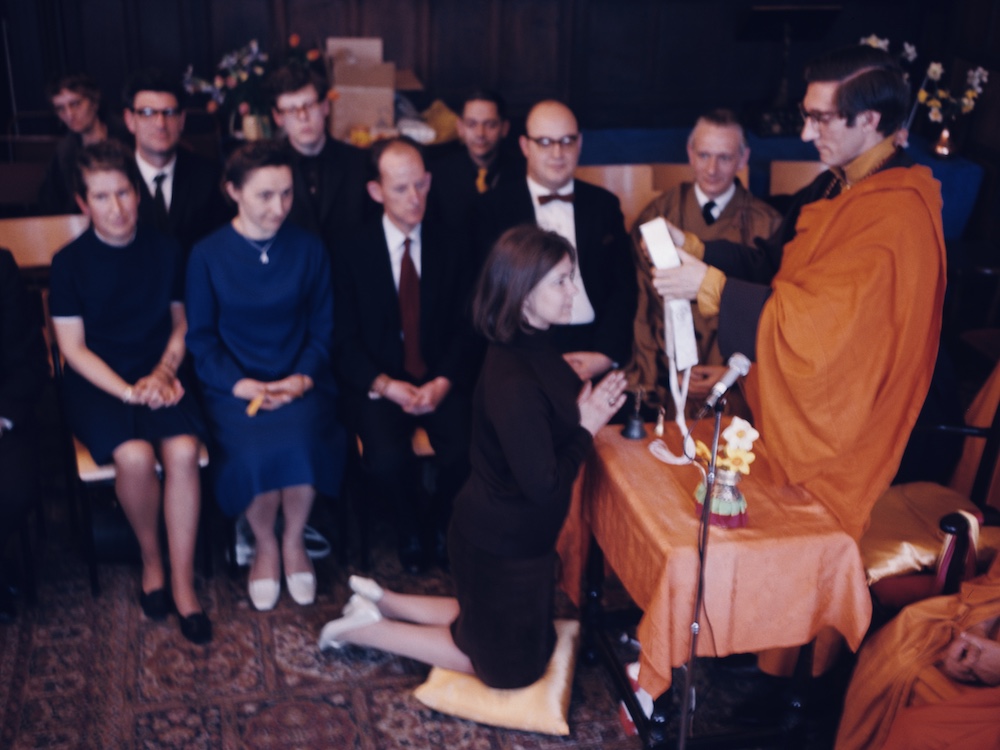
Sangharakshita conducting the first ordinations, 1968
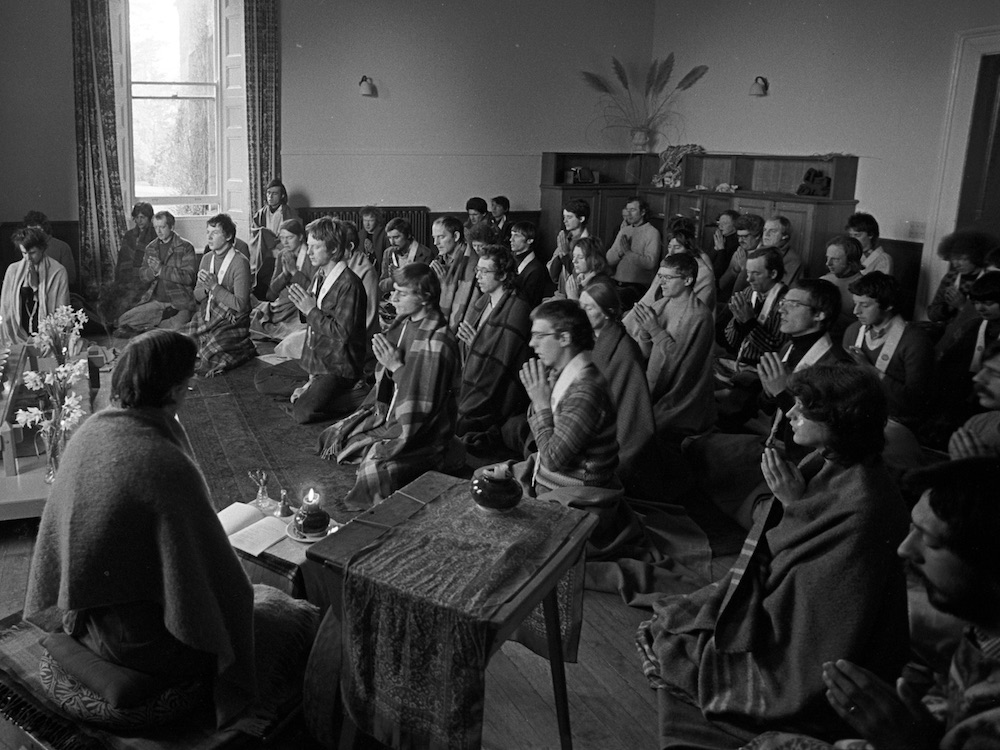
an order convention at Vinehall, 1978
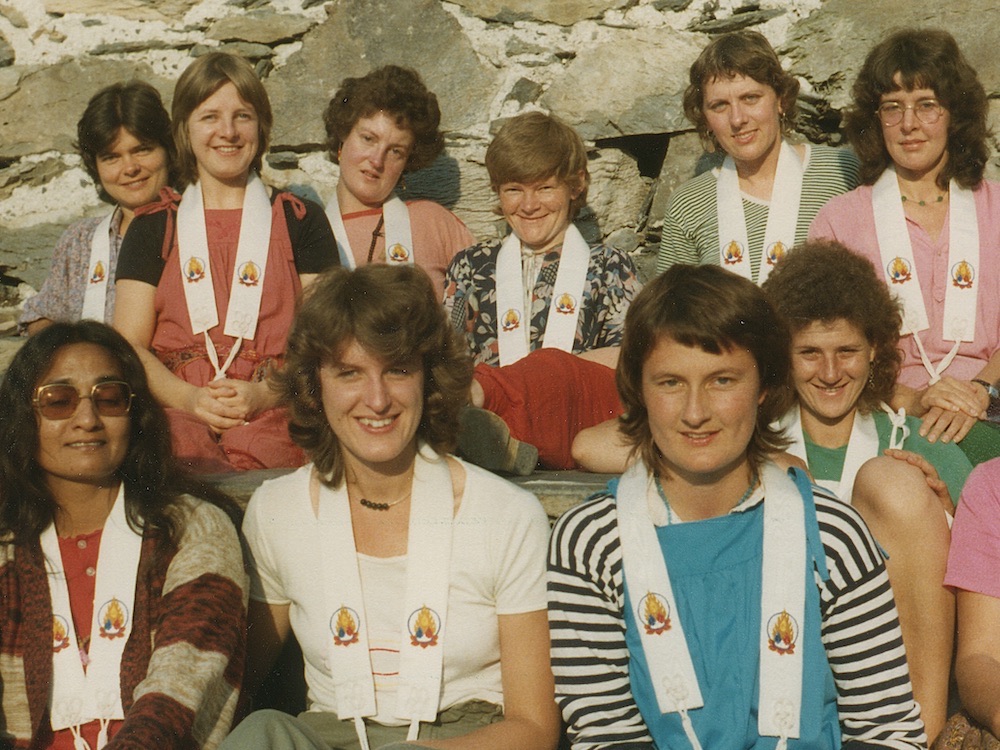
Dharmacharinis on retreat at Battle, 1982
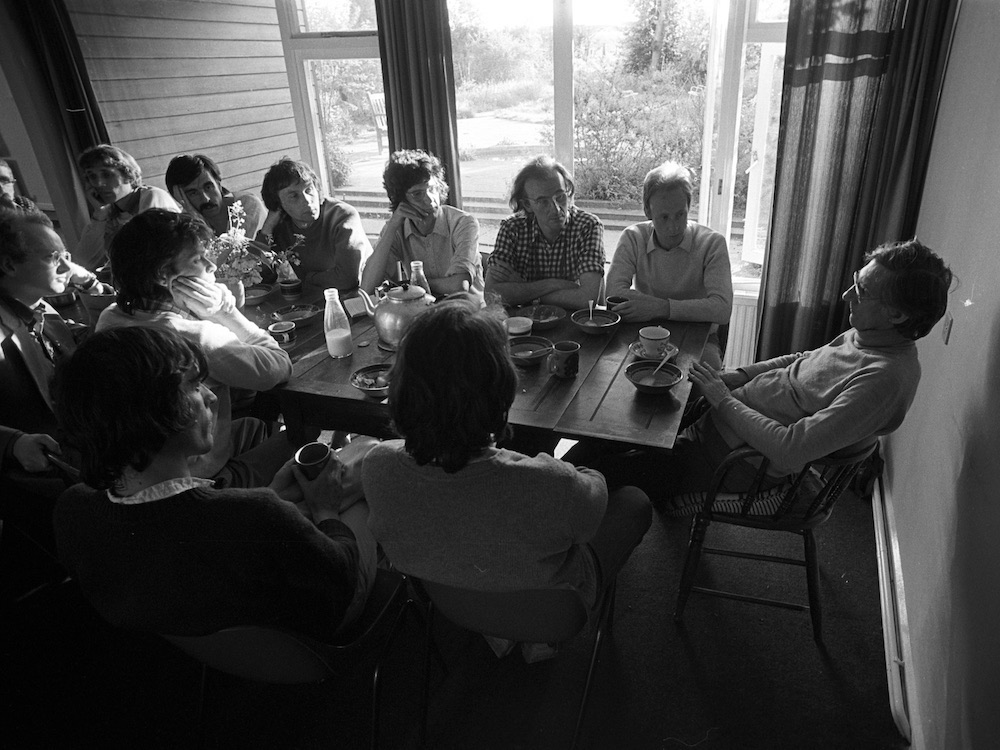
Dharmacharis at Padmaloka with Sangharakshita, 1980
In engaging with this area, our concern was the impact of these views on Triratna and people engaged with it. We recognise that the bald summaries of these ideas above leave out important qualifications that were present when Sangharakshita discussed these areas himself. However, the ideas themselves had enthusiastic proponents, many of whom were influential members of our community, and these people sometimes left out the qualifications. Their influence gave these attitudes a significant cultural weight perhaps beyond that initially intended.
Approaching these issues after many years, we recognised several ways we could helpfully engage with them:
- Understanding how these problems arose
- Assessing the impact on individuals who were affected badly, neither understating or overstating the problems
- Expressing our deeply felt sadness and regret for any suffering that resulted
- Encouraging the development of conditions in which continuing unhappiness can be addressed and, if possible, resolved
- Assessing whether these issues remain current, clearly stating that the views in question are not part of Triratna’s current teaching and, where necessary, identifying what should happen to prevent a recurrence.
Much had already been done to address these problematic ideas over a period of decades, long before the Adhisthana Kula was formed. Sources of information about Triratna’s changing relationship to these ideas include a long article by Vishvapani entitled Growing Pains (2006), and The Triratna Story (2009) by Vajragupta. This is a complex story of the development of a community, and we welcome future accounts of these issues by other writers.
In stating that these ideas form no part of Triratna teaching today, we are not saying that no one within Triratna holds these views or communicates them. A range of views exist in our society on many cultural issues, and we have no desire (or capacity) for ideological policing of individual opinions. We are stating the mainstream position that is reflected, for example, in common teaching materials, and our commitment to ensuring that this is reflected in teaching situations.
As well as adding nuance to these ideas, Sangharakshita also made it clear that they concern matters that are peripheral to the main body of his teaching, which concerns the Dharma as a path, and that people within Triratna are under no obligation to agree with him on such matters.
The Charge of ‘IdeOlogical Grooming’
Each of these ideas raises slightly different issues, but we first need to consider them together. An important element in many of the charges that have been made against Sangharakshita is that these ideas were, in effect, a form of grooming by Sangharakshita and others, creating an outlook that made young men in particular more amenable to sexual advances from older men in senior positions within Triratna. There is little doubt that these ideas did indeed open sexual opportunities for homosexual men including Sangharakshita. To a lesser but still significant extent this also affected relationships between women.
One interpretation is that these views were propounded in a cynical attempt to manipulate others for the sake of sexual gratification. Another is that they were held sincerely and the risk of harm of which we are now aware was obscured by prevailing cultural attitudes and the intensity of Triratna’s culture, as well as personal and collective ethical blindspots.
We incline towards the second of these interpretations because we see no reason to doubt that Sangharakshita and others genuinely believed the ideas they put forward. However, this does not detract from the serious consequences of these ideas for some people, which we deeply regret.
1/ Sex and Kalyana Mitrata (Spiritual Friendship)
The section on Sangharakshita and Sex discusses the impact of Sangharakshita’s sexual behaviour with some of his followers in the 1970s and ‘80s.
Kalyana mitrata – spiritual friendship based on the Dharma – continues to be a central part of Triratna’s approach. In keeping with our understanding of the fluidity of human relationships, kalyana mitrata relationships are less formally boundaried than those shaped by traditional ideas of discipleship. This informality has been a strength but it has also, in some cases, meant that important boundaries have not been observed. Sangharakshita engaged sexually with some male students, motivated, he said, by a ‘desire for a deeper and more authentic human communication’. He also shared the idea that sex could be helpful in this way, and some others acted in similar ways.
Clarifying Triratna’s Teachings
It is now widely understood within Triratna that regarding sex as an aspect of spiritual friendship was a mistake that led to significant confusion and suffering. We acknowledge this and deeply regret that this has happened.
This understanding has been widespread for many years. In 1986 a meeting of senior Order members reviewed the practice of kalyana mitrata and agreed that it was unwise to include sex within it; in 1992 Sangharakshita wrote a ‘Letter to a Friend’ in which he commented: ‘I do not believe in sexual activity as a means of ‘opening people up’ and have never personally engaged in it with this end in view.’
In August 2017 Sangharakshita reaffirmed previous statements when he wrote: ‘Personal experience has shown me that it is better to keep one’s sexual relations and one’s spiritual friendships separate.’
A Complex Personality: A note by Sangharakshita
Frequently Asked Questions 2018:3
Current Practice in Triratna
This issue has long been raised as a matter of ethical sensitivity and responsibility and in 2017 the College of Public Preceptors reinforced this in a statement declaring: ‘it has long been our position that sexual contact between teachers and their students is undesirable’. The relationship between a preceptor and the person they ordain is particularly sensitive and the College affirmed that ‘Preceptors should not enter into sexual relations with those they have ordained or are helping to prepare for ordination, and they should not ordain anyone with whom they already have such a relationship.’
In 2016, following some discussions, a set of Model Ethical Guidelines was agreed by the Triratna International Council and the European Chairs Assembly (ECA) to Triratna Centres and enterprises stating that ‘is highly inadvisable for those leading Buddhist activities, or in positions of leadership, responsibility or spiritual mentoring, to enter into sexual relationships with those new to Triratna.’ The 2020 version of the Guidelines is here.
In addition to these general guidelines for ethical conduct, it is important that in the case of more serious ethical breaches members of our community encounter sanctions. Details of what we have done in this area can be found in the section on Addressing Ethical Concerns Today.
The issue of sex within kalyana mitrata relationships is distinct from that of sexual relationships between members of the Triratna community as a whole. The informal nature of many personal connections within Triratna and the non-celibate status of most Order members means that sexual relationships often develop between people within Triratna as a normal part of their lives. These sometimes involve people of somewhat different levels of experience when there is no teaching relationship. These are not inherently problematic, but the risk that an important boundary will be breached means that caution and sensitivity are essential.
Restorative Approaches
To support people who have suffered as a result of unethical sexual behaviour, we initiated the use of Restorative Process. You can read about that here.
2/ HETEROSEXUALITY AND HOMOSEXUALITY
The belief that male homosexuality is superior to heterosexuality undoubtedly had currency among influential individuals in Triratna, including a few senior Order members. An associated idea, was that homosexual relationships (male or female) were preferable for practical reasons for people who wished to avoid the entanglements of family life because they left them free to engage in Dharma practice. This meant that some people engaged in homosexual sex, who would not otherwise have done so.
This idea does not feature in Sangharakshita’s lectures or books, and the best records of what he communicated as a teacher in the 1970s are the verbatim transcripts of his seminars (intensive study sessions with his disciples), most of which are publicly available. In a 1998 article Dhammadinna reviews these transcripts and comments that in one seminar:
Sangharakshita concluded that, spiritually speaking, there is probably not much difference between heterosexual and homosexual relationships, and that we must be equally mindful in either. What is important, he said, is that we cultivate friendship, which will help us to leave sex behind.
However, it is undoubtedly true that these ideas were influential in affecting how people behaved. In 1977 an Order member wrote an article advocating sex between younger men and older male mentors entitled ‘Leaving Mother and Initiation into Manhood’ which was widely read, and other texts circulated in a similar way.
This idea forms no part of Triratna’s current teaching, and so far as we are aware, it no longer has currency in its practice. The ethical considerations and sanctions already mentioned of course apply equally to homosexual and same-sex relations.
3/ MEN AND WOMEN
In 1979 Sangharakshita published an aphorism: ‘Angels are to men as men are to women – because they are more human and, therefore, more divine.’ This baldly asserted a view that he had elsewhere expressed with greater nuance that, at least in the early stages of spiritual life, women in general, had less spiritual aptitude than men. It also expressed an attitude towards women that was evident elsewhere: although Sangharakshita founded an Order where women had an equal ordination and he mentored and encouraged many women in his personal communication, he preferred the company of men and seemingly valued their qualities more highly than women’s.
Single sex living and working situations and largely separate settings for Dharma practice developed early in Triratna’s history, and they continue to be an important element in its practice. This has been a matter of discussion and debate from the outset, but the approach proved effective, and has now continued for several decades. So, while many Triratna activities are mixed, single-sex activities continue to be a significant aspect of practice in Triratna.
The presence among us of people who no longer identify as female or male and the wider questioning of gender roles in western societies raise further issues for Triratna (in common with many other communities). However, these discussions are distinct from the ethical issues with which our investigation was concerned; in that regard, we note that single-sex practice implies that men and women may have somewhat different needs, but it does not in itself imply that one gender is superior to another.
We also acknowledge that an element of antipathy sometimes accompanied the separation of the sexes in Triratna’s early years; that some people suffered as a result, especially when it affected family life (see the next section); and that their experience has continued to affect the movement. In some institutional contexts single sex practice was enacted in extreme ways that resulted in women lacking equal access to supportive conditions and teaching and encountering misogynistic attitudes. For a long time it was common to hear that it was preferable for men to be chairs of Triratna Centres because other men would find it hard to follow the leadership of a woman; a view disproved by the many female Chairs leading Triratna centres around the world today.
These views and attitudes around gender have been the source of pain and controversy within Triratna over many years and do not form part of our teaching today. The Triratna Story offers a detailed account of how these ideas were debated, assessed and largely rejected in Triratna up to 2009.
Addressing Views
In 1994 Subhuti outlined Sangharakshita’s views on gender in his book Sangharakshita: a New Voice in the Buddhist Tradition, and expanded this section in a long essay entitled Women, Men and Angels, which was published by Windhorse in 1995.
In 2004 Subhuti expressed his regret at the publication of Women, Men and Angels. In 2017, in parallel to the work of the Adhisthana Kula, he made a public statement of his current position, clarifying his views about both the book and women in the spiritual life, adding:
I want to make it quite clear that I very much regret the publication of my book, Women, Men and Angels, which I think was a serious mistake. I am happy that the book was long ago withdrawn from distribution by the publisher and that all remaining copies were pulped for recycling about 10 years ago.
Following this statement, Maitreyi interviewed Subhuti on these topics. In this interview he adds that not only did he regret the publication, he thought that ‘the comparison of two classes of individuals … of any kind in relation to a term such as ‘spiritual aptitude’ is useless … dangerous and problematic.’
A further test of the current impact of views on gender within Triratna is the representation of women within the Order and Triratna’s leadership. The balance has changed dramatically over the years and, leaving India with its distinctive cultural conditions aside, the proportion of women, as opposed to men, Order members has increased from 15% in 1978 to 46% in 2020. The appointment of Ratnadharini as the Chair of the College of Public Preceptors (the most senior role within Triratna), is a significant step and attests the presence of many women at all levels of Triratna’s leadership.
4/ Single People and those in Relationships or Families
Triratna has always presented itself as a community that is open to all, irrespective of lifestyle. At the same time a strong cultural emphasis in the early decades of Triratna was placed on living in a residential community without a family. This lifestyle was identified as the one most conducive to Dharma practice.
In this extract from one of Sangharakshita’s seminars he describes living in a single-sex community as ‘an assault on the existing social setup’
It changes your whole pattern of domestic life; it changes your whole pattern of work; it changes the whole rhythm of your day-to-day existence. It changes your psychological attitude, changes your emotional attitude; corrects your emotional dependence [on the opposite sex]; gives you a completely different sort of environment and context within which to function.
The result was that the early years of residential communities, Team-based Right Livelihood businesses and single-sex practices saw tensions between people who were fully engaged with these new ways of living (usually young people without families) and those living in committed relationships or with their families. People living in families sometimes felt that their place within Triratna was marginal, and some people left their families to live in ways they believed would enable them to commit themselves more fully to Dharma practice. This caused confusion and sometimes suffering, including an impact on the next generation.
As with other areas, these experiences have been discussed extensively over many years and, on the whole, Triratna has evolved into a community that includes many lifestyles, including families. At the same time, Triratna’s engagement with alternative lifestyles has been based on the understanding that supportive conditions are important for Dharma practice and that effective communities offer them. The challenge for Triratna is to balance these, without disparagement or marginalisation, and so far as we can ascertain, these are things of the past.
The Triratna Story (chpt.5) describes this changing relationship with family life.
Dharma Life – Family Life
In March 2017 Saddhaloka (the Chair of the College of Public Preceptors) wrote to Order members acknowledging the difficulties that had arisen, for example in relation to single-sex activities. In January 2018 we used the Adhisthana Kula Blog to address this more fully. Saddhaloka wrote a short article, commenting:
Nowadays there is a great span of ages and lifestyles in the Order, and it is a minority who work full time in our Triratna institutions. There is a lot more human — and spiritual — maturity and experience that we can draw on and it is hopefully much more straightforward for anyone to find their place in our community, whatever their lifestyle.
Issues about lifestyle – e.g. whether to have a baby; whether to move in with a partner; how to balance a wish to go on retreat or take on a project with the needs of other people – are very personal. Saddhaloka’s article introduced a series of videos and articles in which Public Preceptors and others frankly discuss their experiences of family life, sexual relationships and celibacy.
Saddhaloka and Moksananda in Conversation about Families
Some Thoughts on Motherhood: the Path of Loving and Letting Go by Punyamala
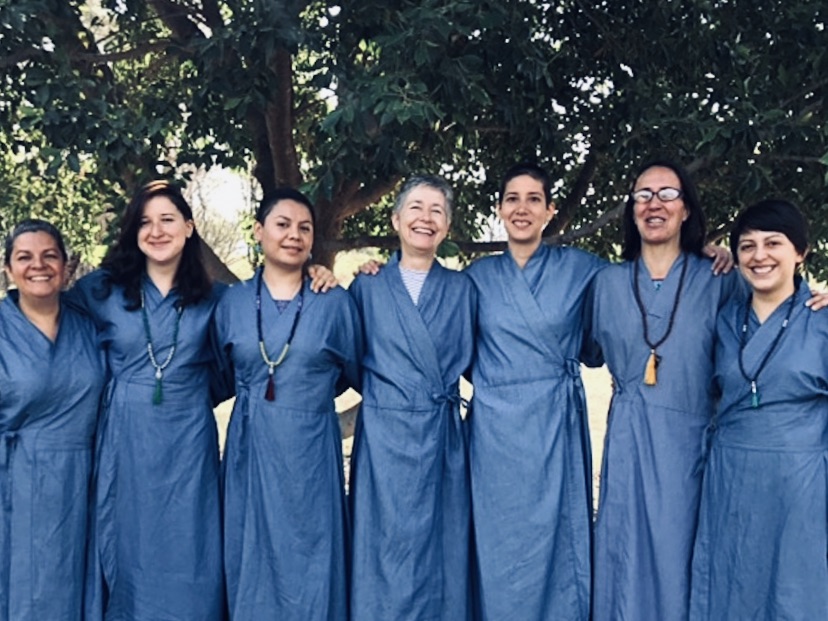
women’s ordinations in Mexico, 2017
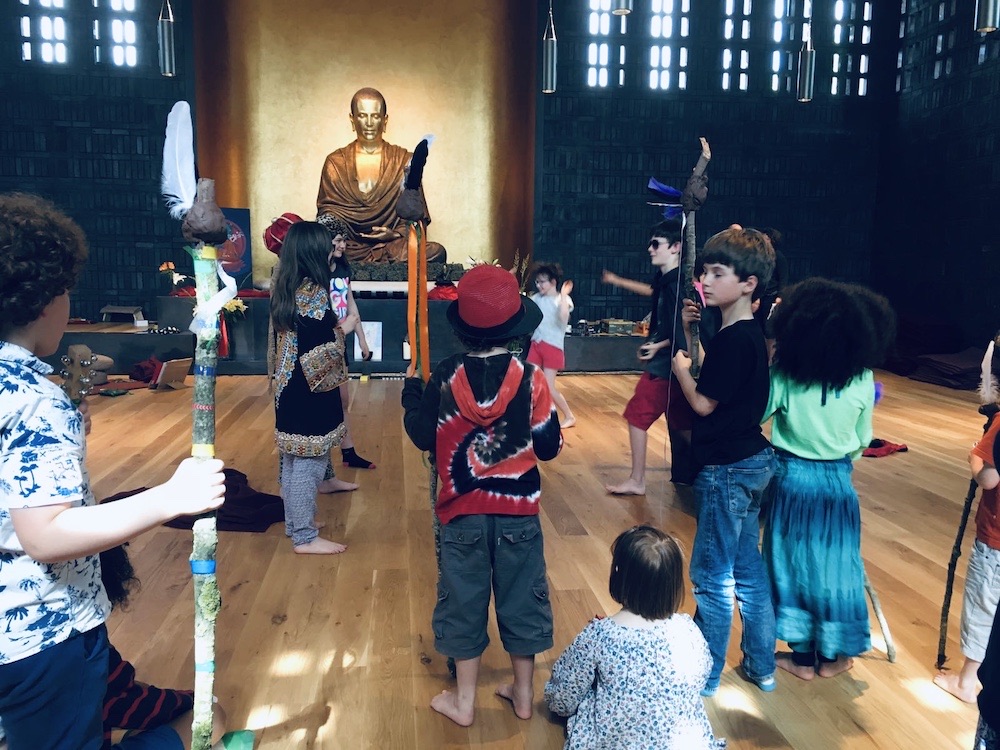
a family retreat at Vajrasana, 2017
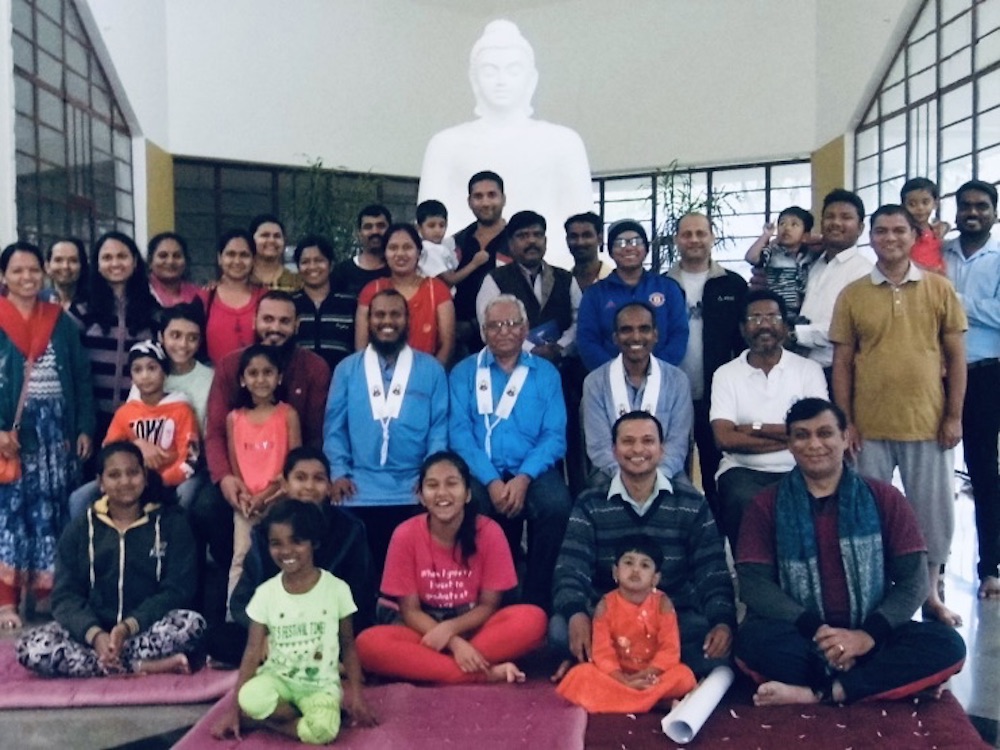
a family retreat at Saddhamma Pradeep retreat centre, 2018
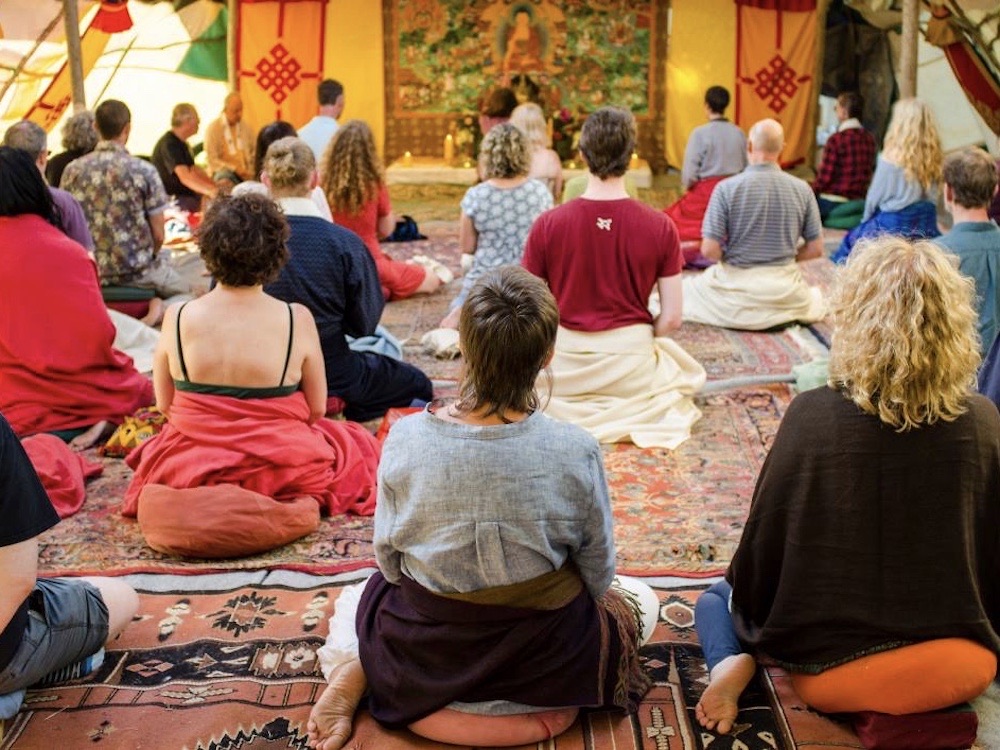
meditation at Buddhafield Festival, 2019
